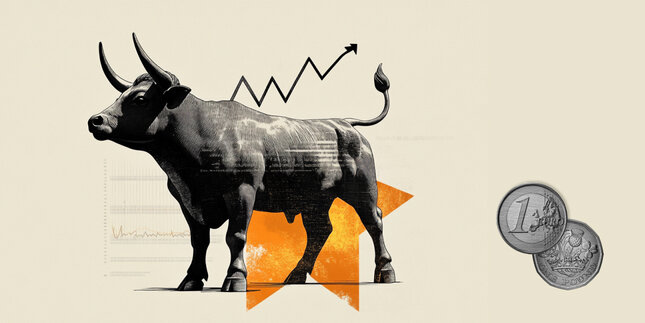WTI falls toward $57.00 due to concerns over OPEC+ supply increase, weakening demand
- WTI has dropped to a three-week low, pressured by fears of a potential supply boost from the Saudi-led OPEC+ alliance.
- The US economy contracted in the first quarter of 2025—its first decline in three years—highlighting mounting economic strain.
- A larger-than-expected drawdown in US crude inventories provided some limited support to Oil prices.
West Texas Intermediate (WTI) crude Oil price is extending its losing streak for a fourth consecutive session on Thursday, trading around $57.20 per barrel during European hours. Oil prices have fallen to their lowest level in three weeks, weighed down by concerns over a potential supply increase from Saudi-led OPEC+ and weakening global demand amid ongoing trade tensions.
Reports suggest Saudi Arabia is signaling to allies and industry stakeholders that it is not willing to support the market with further production cuts and is prepared to withstand a prolonged period of lower prices. This has strengthened expectations that OPEC+ could announce an increase in output when it meets on May 5.
Adding to the bearish sentiment, the US economy contracted in the first quarter of 2025—its first decline in three years—reflecting the economic strain from US President Donald Trump’s aggressive trade policies. US GDP shrank by an annualized 0.3% in Q1, falling short of the 0.4% growth forecast and sharply down from the 2.4% expansion recorded in the previous quarter.
However, a larger-than-expected decline in US crude inventories offered some support to Oil prices. The Energy Information Administration (EIA) reported on Wednesday that crude stockpiles dropped by 2.7 million barrels last week, driven by higher exports and refinery demand.
Despite this, Oil prices have slumped more than 20% since the start of President Trump’s second term—falling below the breakeven point for many U.S. producers, as investor confidence wanes amid tariff disputes and policy uncertainty, undermining the administration's goal of achieving energy dominance.
WTI Oil FAQs
WTI Oil is a type of Crude Oil sold on international markets. The WTI stands for West Texas Intermediate, one of three major types including Brent and Dubai Crude. WTI is also referred to as “light” and “sweet” because of its relatively low gravity and sulfur content respectively. It is considered a high quality Oil that is easily refined. It is sourced in the United States and distributed via the Cushing hub, which is considered “The Pipeline Crossroads of the World”. It is a benchmark for the Oil market and WTI price is frequently quoted in the media.
Like all assets, supply and demand are the key drivers of WTI Oil price. As such, global growth can be a driver of increased demand and vice versa for weak global growth. Political instability, wars, and sanctions can disrupt supply and impact prices. The decisions of OPEC, a group of major Oil-producing countries, is another key driver of price. The value of the US Dollar influences the price of WTI Crude Oil, since Oil is predominantly traded in US Dollars, thus a weaker US Dollar can make Oil more affordable and vice versa.
The weekly Oil inventory reports published by the American Petroleum Institute (API) and the Energy Information Agency (EIA) impact the price of WTI Oil. Changes in inventories reflect fluctuating supply and demand. If the data shows a drop in inventories it can indicate increased demand, pushing up Oil price. Higher inventories can reflect increased supply, pushing down prices. API’s report is published every Tuesday and EIA’s the day after. Their results are usually similar, falling within 1% of each other 75% of the time. The EIA data is considered more reliable, since it is a government agency.
OPEC (Organization of the Petroleum Exporting Countries) is a group of 12 Oil-producing nations who collectively decide production quotas for member countries at twice-yearly meetings. Their decisions often impact WTI Oil prices. When OPEC decides to lower quotas, it can tighten supply, pushing up Oil prices. When OPEC increases production, it has the opposite effect. OPEC+ refers to an expanded group that includes ten extra non-OPEC members, the most notable of which is Russia.
Forex News
Keep up with the financial markets, know what's happening and what is affecting the markets with our latest market updates. Analyze market movers, trends and build your trading strategies accordingly.






















